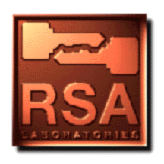

A block cipher transforms a fixed-length block of plaintext data into a block of ciphertext data of the same length. This transformation takes place under the action of a user-provided secret key. Decryption is performed by applying the reverse transformation to the ciphertext block using the same secret key. The fixed length is called the block size, and for many block ciphers, the block size is 64 bits.
Since different plaintext blocks are mapped to different ciphertext blocks (to allow unique decryption), a block cipher effectively provides a permutation of the set of all possible messages. The permutation effected during any particular encryption is of course secret, since it is a function of the secret key.
More information about block ciphers and the various available algorithms can be found in almost any book on contemporary cryptography and in RSA Laboratories Technical Report [Rob95a].